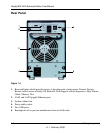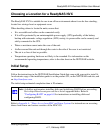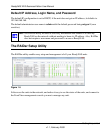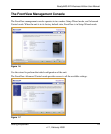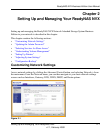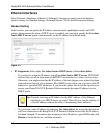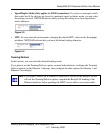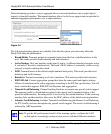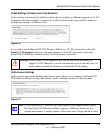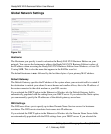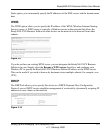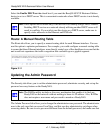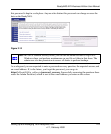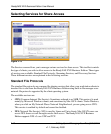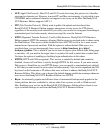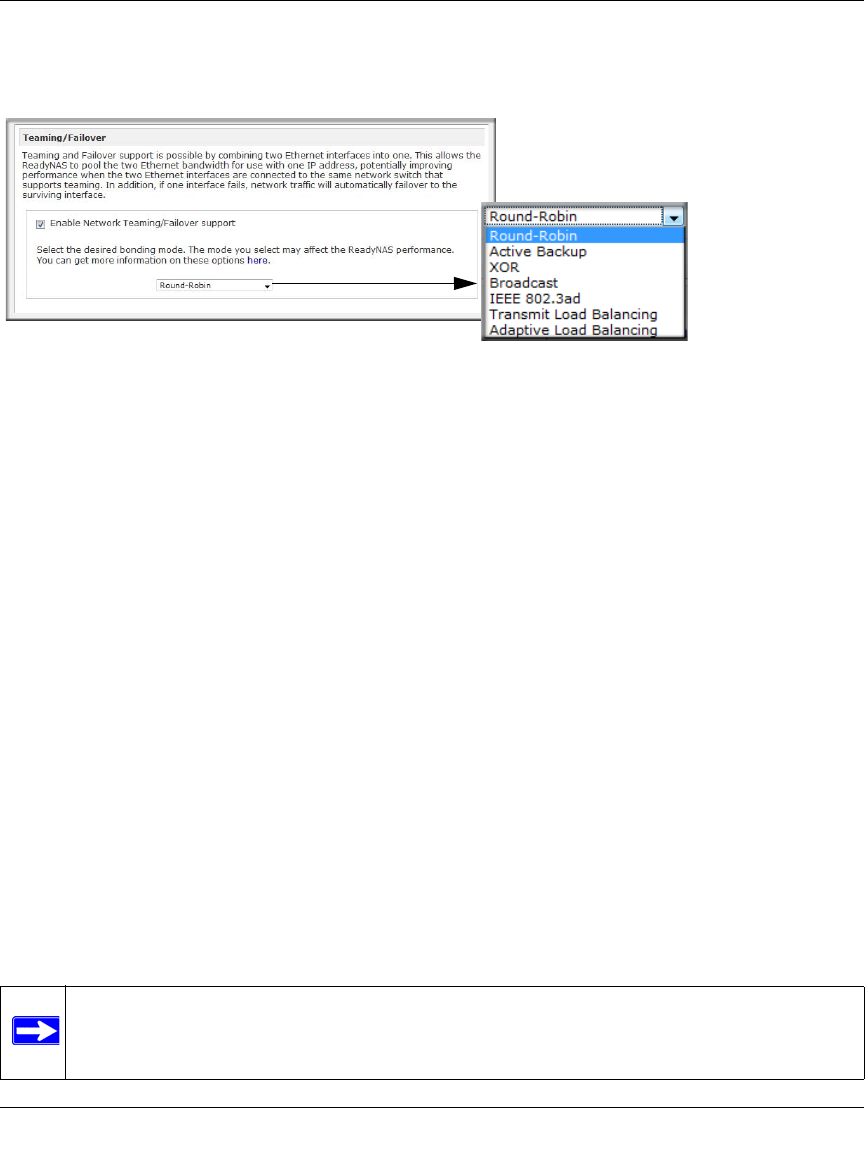
ReadyNAS NVX Business Edition User Manual
2-4 Setting Up and Managing Your ReadyNAS NVX
v1.1, February 2009
Network teaming provides a way to aggregate the two network interfaces into a single logical
teamed, or bonded, interface. The teamed interface allows for fail-over support and can provide for
enhanced aggregate performance over a single interface.
The following bonding options are available. Note that the option you select may affect the
ReadyNAS network performance.
• Round-Robin: Transmit packets in sequential order from the first available interface to the
next. This mode provides load balancing and fault tolerance.
• Active Backup: Only one interface in the bond is active. A different interface becomes active
if, and only if, the active interface fails. The bond’s MAC address is externally visible on only
one port to avoid confusing the switch.
• XOR: Transmit based on the default simple transmit hash policy. This mode provides load
balancing and fault tolerance.
• Broadcast: Transmit everything on all slave interfaces. This mode provides fault tolerance.
• IEEE 802.3ad: Creates aggregation groups that share the same speed and duplex settings.
Utilizes all interfaces in the active aggregator according to the 802.3ad specification. You will
need a switch that supports IEEE 802.3ad Dynamic link aggregation.
• Transmit Load Balancing: Channel bonding that does not require any special switch support.
The outgoing traffic is distributed according to the current load (computed relative to the
speed) on each interface. Incoming traffic is received by the current interface. If the receiving
interface fails, another interface takes over the MAC address of the failed receiving interface.
• Adaptive Load Balancing: Includes Transmit Load Balancing plus Receive Load Balancing
for IPV4 traffic, and does not require any special switch support. The receive load balancing is
achieved by ARP negotiation.
Figure 2-5
Note: To get the full performance benefit of the teaming option, configure the LAN
switch options accordingly, and provision servers with dual Ethernet interfaces.



